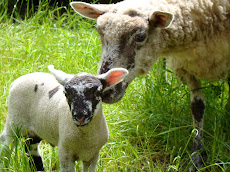
I know we have a little bit longer until the official first day of spring, but today was for all intents and purposes the my first day. It was very cold this morning due to a perfectly clear sky. By 11am however, it had warmed up and the sunlight was peaking through the trees. We headed outside.
The tulips, daffodils, iris and lilies had sent up an inch to 4 inches of green leaves. Leaf buds were starting on all the shrubs. The birds were going crazy after days of cold and rain. It was glorious.
I decided to ease into pruning by tiding up the flowerbeds. We have very large flowerbeds all around our house. They had all been neglected since last fall, so there was dead plant stuff everywhere. I pulled this all out, loading it into the wheelbarrow. From there, Jeremy took loads to the fire out back. Jeremy also made a good dent in the blackberries, putting them on the fire too. The damp leaves and reeds smoked something awful. I'm sure our neighbors really appreciated being drenched in thick smoke all day. Thankfully, the rest of the county was burning too.
Next were the roses. President's Day is typically my rose pruning day and I figured two days early wouldn't hurt anything. We have roses in all the flower beds and all along the driveway to the road. It's amazing how regular garden gloves won't stop a rose thorn. I have cuts and scrapes all over my hands. But with any luck we'll have lovely roses this summer to greet us when we get home every day.
On to pruning the fruit trees. Last year I found a great little book called "Dwarf Fruit Trees for the Home Gardener" (by Lawrence Southwick), copyright 1972. All my fruit trees are dwarf to facilitate easier fruit picking. In reading the book I learned something very important - you don't prune all fruit trees the same way. You're probably thinking, well duh! But I honestly thought the point was just to remove dead or dying branches. Turns out that this is generally true, but there are some other "rules" for each trees.
First, apple and pear tree branches need to support a lot of weight. It's important to remove weird angle branches, weak ones and those that are competing (running into each other). You can train these trees by trimming to keep them short or tying to fences and trellises to spread the branches out. We have 22 apple and pear trees ranging in age from one to five years, and one old apple tree out in the pasture. I prune them every year, so it's not a big chore just simple maintenance.
Peach trees are different. Peaches grow on new-growth branches, not old ones. So thinning the peach tree each year to remove old branches and dead material helps you get more fruit. This takes a lot more time, walking around the tree, taking a branch here and a branch there. Fortunately we only have one peach tree, so it didn't take too long. Last year we got 7 peaches on this 5 year old tree. I hope for many, many more this year.
We also have plum trees, which don't require much pruning until they get older. I just removed dead branches and trimmed the really tall ones (I don't like having to climb on ladder to pick fruit - I'm lazy that way). The other fruit tree we have is a persimmons - it's not covered in the dwarf book. I skipped it for now and will do more research about this neat tree.
The very last thing I did today was to move the mason bees. We have one block full of tubes with bees that are quickly maturing and getting ready to come out and pollinate the now pruned fruit trees. I put the whole block into a box and taped it shut except for a small hole where the bees can escape. I put the box under a new block full of new tubes. Over the next month the bees should hatch and take up residence in the new block. Their hard work should produce lovely apples, pears, peaches and plums for us to enjoy. Thank you little bees!













1 comment:
A good friend reminded me that the other really important reason to prune is to improve circulation. Thanks for the tip Brandon!
Post a Comment